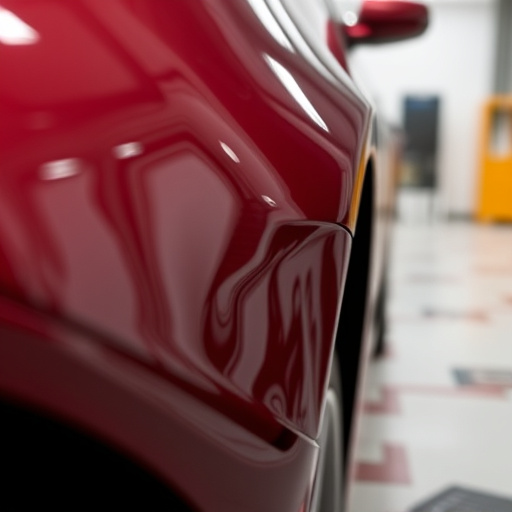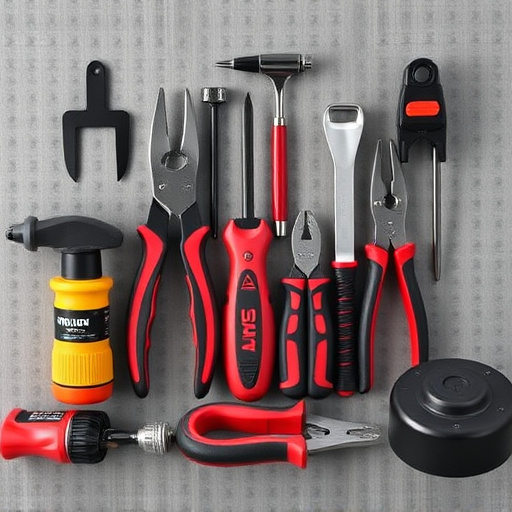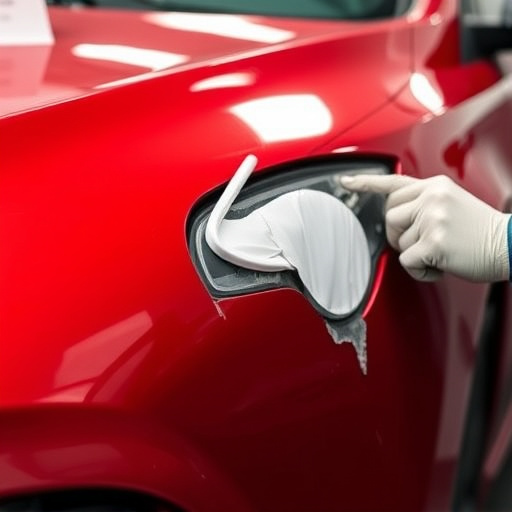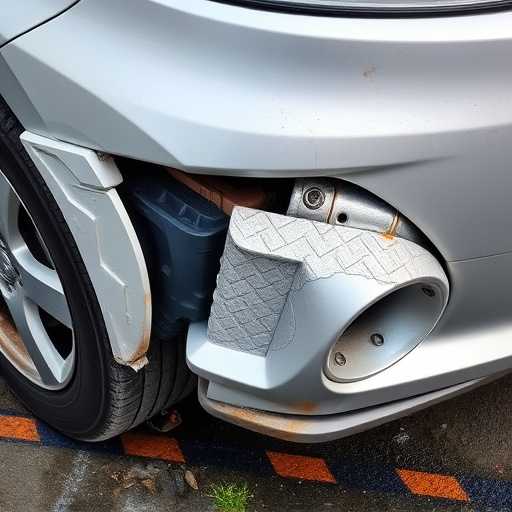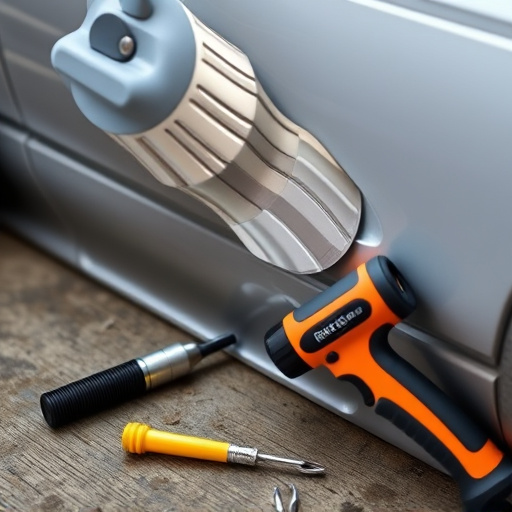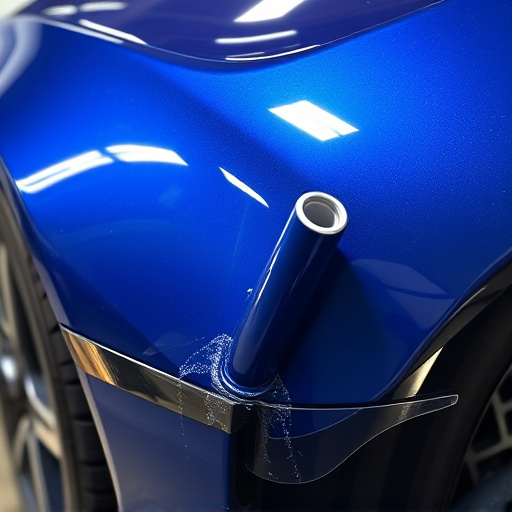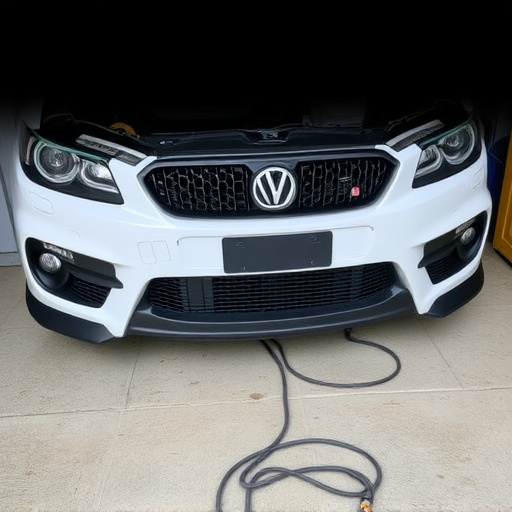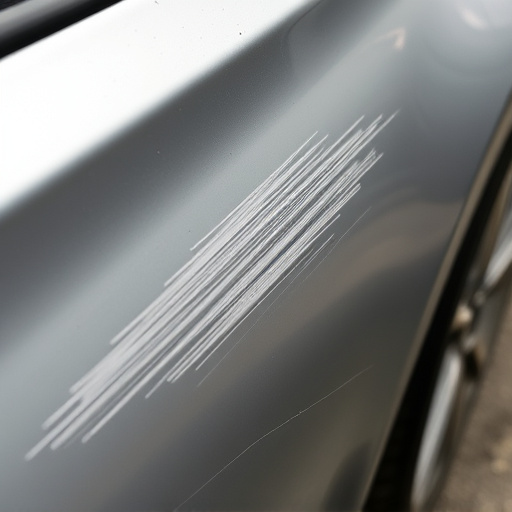Mercedes headlamp assist calibration is a vital process for repairing Advanced Driver Assistance Systems (ADAS), ensuring vehicles have optimal illumination for safety. This involves adjusting headlight aim and intensity to prevent glare, impacting driving safety, handling, and stability, even affecting tire services. Proper calibration is essential for auto glass repair specialists and Mercedes technicians, as it prevents ADAS malfunctions and ensures seamless performance of features like adaptive cruise control, lane-keeping assist, and automatic emergency braking. To calibrate effectively, park securely, power down all consumers, use calibrated test equipment, connect a calibration tool to the headlamp control unit (HCU), follow on-screen instructions, and verify adjustments in a controlled environment for optimal results.
Mercedes Headlamp Assist Calibration is an essential component of full Advanced Driver Assistance Systems (ADAS) repair protocols. This sophisticated system plays a crucial role in enhancing nighttime visibility and safety for Mercedes-Benz vehicles. Understanding the nuances of headlamp assist calibration is vital for automotive technicians, as it directly impacts the overall functionality and effectiveness of ADAS features. By mastering this process, professionals can ensure optimal performance, ensuring drivers navigate the road with enhanced confidence and peace of mind.
- Understanding Mercedes Headlamp Assist Calibration: A Basic Overview
- The Role of Headlamp Assist Calibration in Advanced Driver Assistance Systems (ADAS) Repair
- Best Practices for Carrying Out Mercedes Headlamp Assist Calibration as Part of a Comprehensive ADAS Reset
Understanding Mercedes Headlamp Assist Calibration: A Basic Overview

Mercedes Headlamp Assist Calibration is a critical component of Advanced Driver Assistance Systems (ADAS) repair protocols. It ensures that the vehicle’s headlamps provide optimal illumination, enhancing safety and visibility on the road. This process involves adjusting the aim and intensity of the headlights to guarantee they cast light precisely where needed, without causing glare to oncoming drivers or pedestrians.
Understanding the mechanics behind Mercedes headlamp assist calibration is essential for both auto glass repair specialists and mercedes benz repair technicians. It requires a meticulous approach, as even slight misalignments can impact driving safety. In addition to ensuring proper lighting, this calibration also plays a role in various associated services, such as tire services, as it influences the vehicle’s overall handling and stability at different speeds and road conditions.
The Role of Headlamp Assist Calibration in Advanced Driver Assistance Systems (ADAS) Repair

Mercedes headlamp assist calibration plays a pivotal role in ensuring the optimal functioning of Advanced Driver Assistance Systems (ADAS). These systems, which include features like adaptive cruise control, lane-keeping assist, and automatic emergency braking, heavily rely on accurate lighting alignment. Calibration ensures that the vehicle’s headlamps are correctly positioned and emit the right light distribution for safe and effective ADAS operation.
Without proper Mercedes headlamp assist calibration, an auto collision center might struggle to achieve seamless integration between the lights and ADAS components. This can lead to suboptimal performance or even malfunction of safety-critical systems. Consequently, car paint repair and bumper repair services, often integral parts of a full ADAS repair protocol, must include this calibration step to guarantee that vehicles return to the road with enhanced safety features functioning at their best.
Best Practices for Carrying Out Mercedes Headlamp Assist Calibration as Part of a Comprehensive ADAS Reset

When carrying out Mercedes headlamp assist calibration as part of a comprehensive ADAS (Advanced Driver Assistance Systems) reset, adhering to best practices ensures precise and effective adjustments. Begin by ensuring the vehicle is securely parked and all power consumers are turned off. Use a calibrated test equipment to check the current settings against manufacturer specifications, making note of any deviations that require adjustment.
Next, locate the headlamp control unit (HCU) and connect the calibration tool accordingly. Initiate the calibration process, following the on-screen instructions precisely. During this procedure, the system will automatically adjust various parameters including beam angle, intensity, and focus to ensure optimal performance. Once complete, verify the adjustments by testing the headlights in a controlled environment to confirm their proper alignment and functionality. Integrating these best practices into your auto repair services guarantees a seamless Mercedes headlamp assist calibration process, enhancing safety features such as those provided through car collision repair and tire services.
Mercedes Headlamp Assist Calibration is an integral part of full Advanced Driver Assistance Systems (ADAS) repair protocols. By ensuring precise alignment and functionality, this process enhances safety features like adaptive cruise control and lane-keeping assist. Following best practices for calibration guarantees optimal performance, contributing to a more secure driving experience for Mercedes owners. Regular maintenance and updates for this system are key to leveraging the full potential of ADAS technology.
